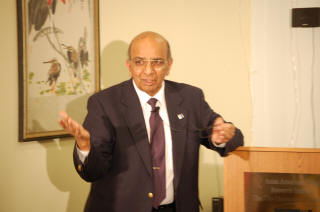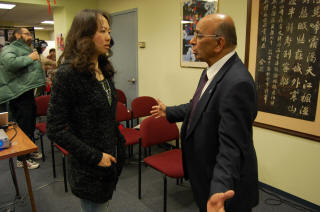
A travelogue of a geologist visiting the hand carved ancient Cave Shrines of Hindus and Buddhists near Aurangabad in the state of Maharashtra in India. These caves were accidentally discovered in early eighteenth century. Starting in Mumbai (Bombay) in Maharashtra state, we go through Aurangabad to the caves of Ajanta and then on to Ellora.

The Ajanta caves, 29 of them, are old (200 BC -650 AD) and were carved out of solid rock (basalt) and also contain frescos which are preserved even till today. The Ellora caves, 34 of them, are younger in age (350 AD to 700 AD) and are also carved into Basalt rock cliffs. Both sets of caves contain large, bigger than life size statues of Hindu Gods and Buddha. The art and science of sculpturing in basalt rock in the past is compared to present day practices.


